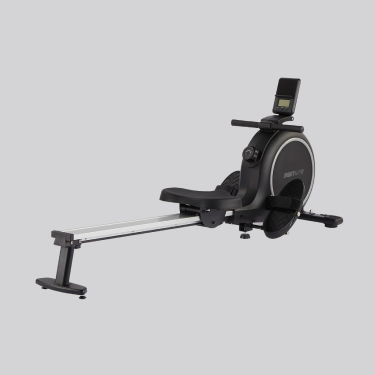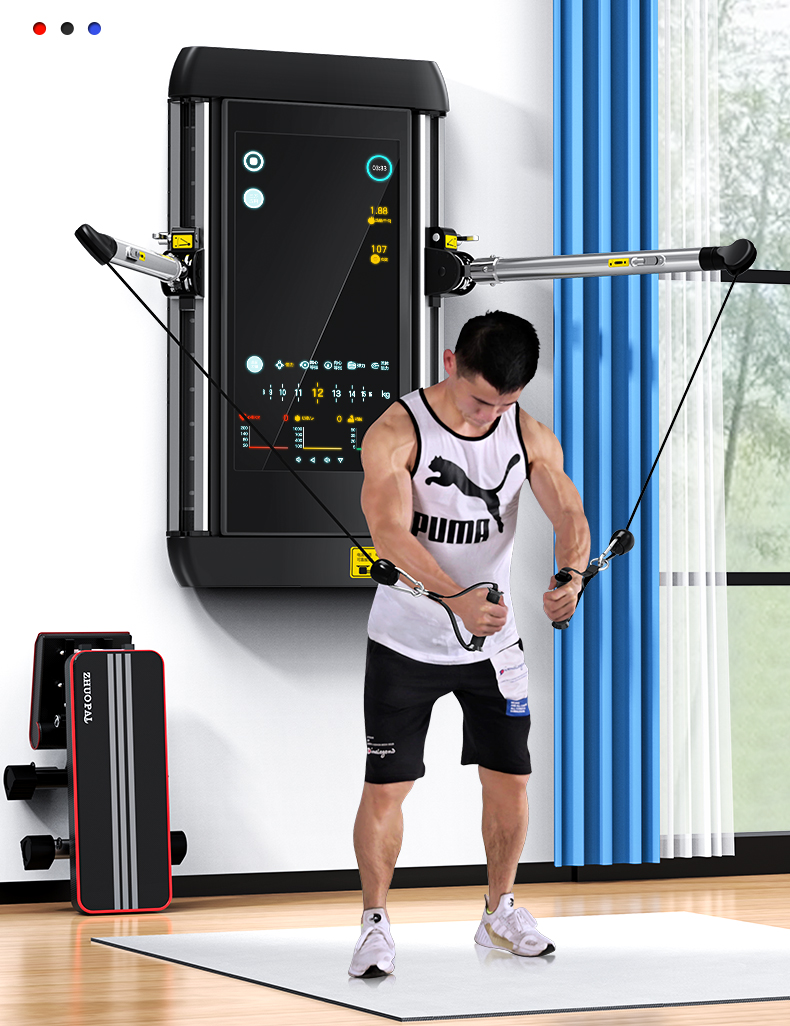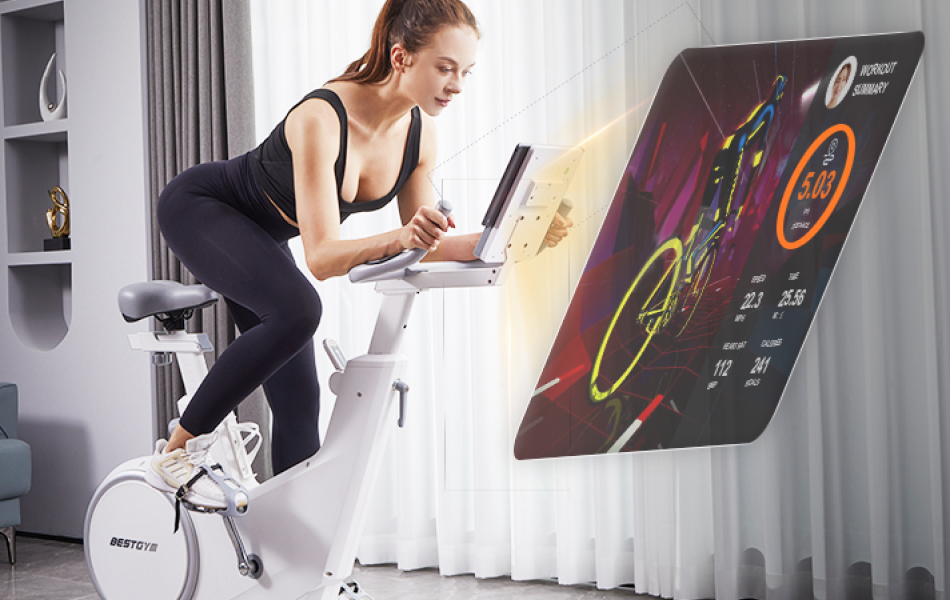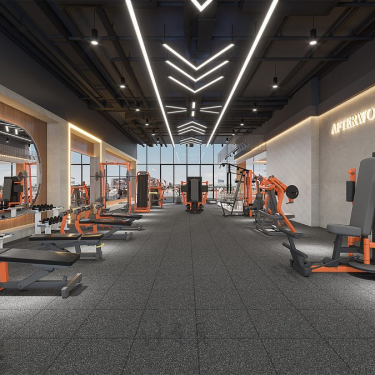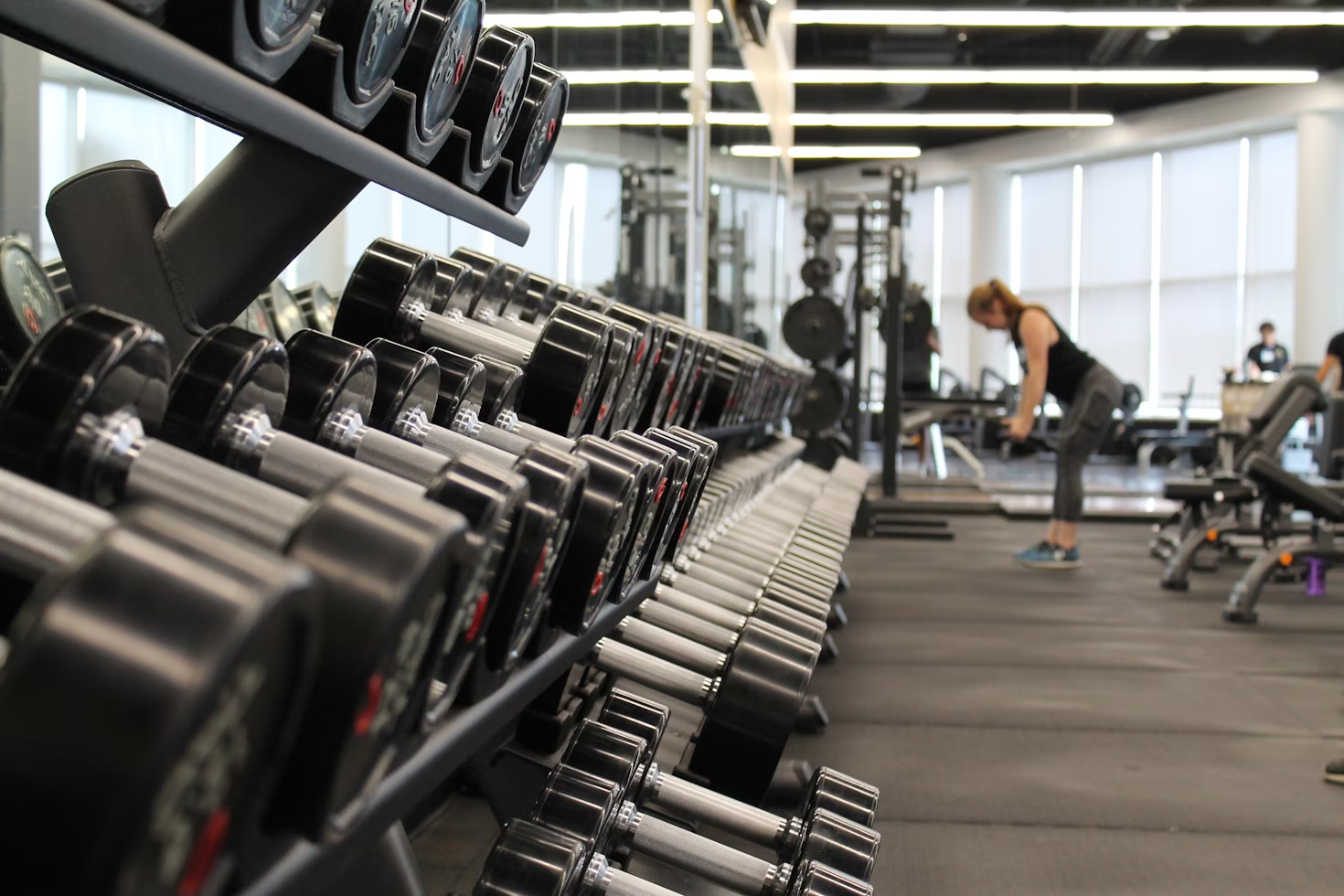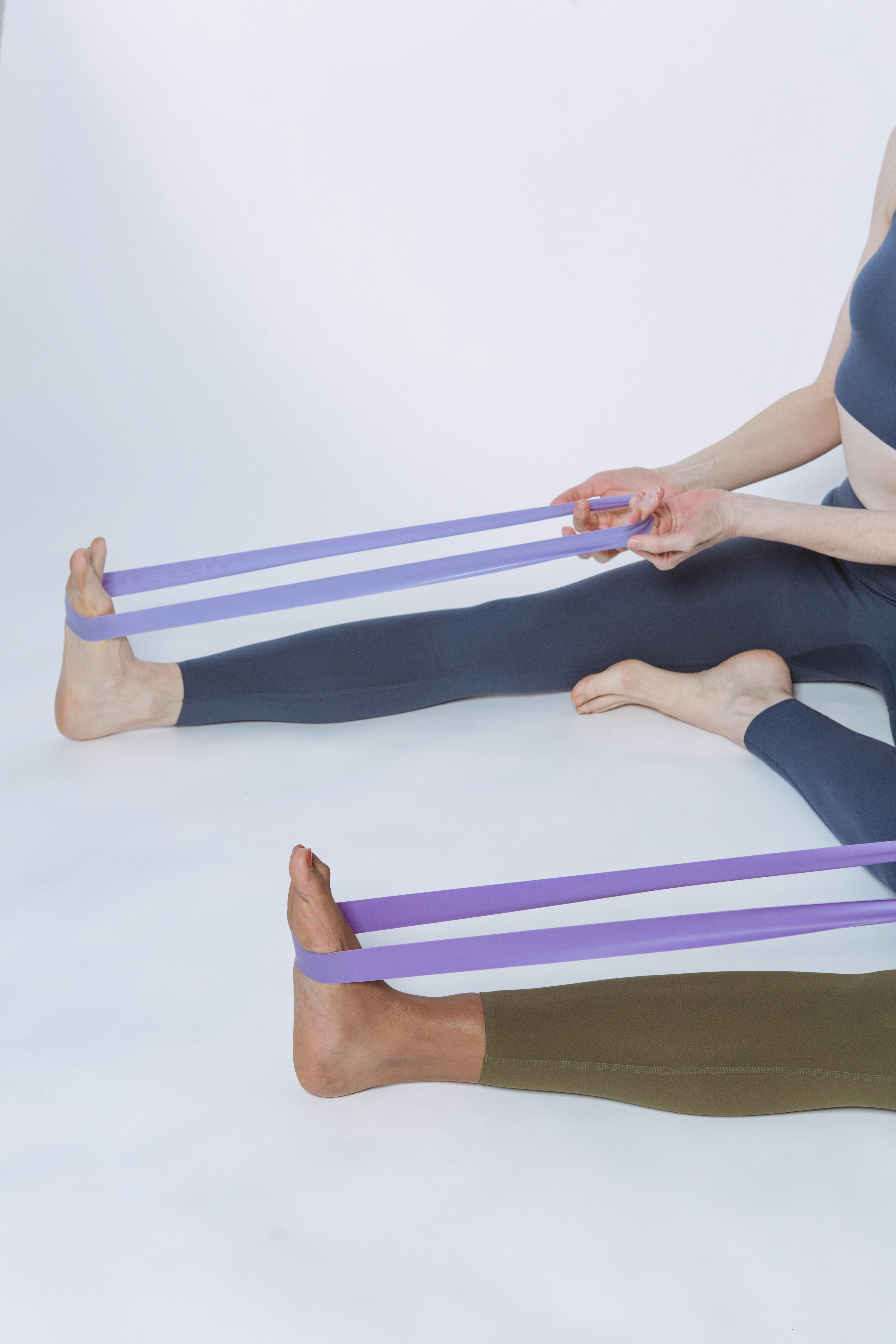The Ultimate Guide to Selling Gym Equipment in the Gym Equipment Market
Entering the fitness equipment market presents an exciting opportunity to capitalize on a booming industry that continues to grow as health and fitness become global priorities. This ultimate guide aims to equip you with the insights and strategies needed to successfully navigate and thrive in this competitive arena. From understanding market trends and consumer behavior to mastering sales techniques and leveraging digital marketing, this comprehensive guide will provide the tools necessary to effectively sell gym equipment. Whether you’re a new entrepreneur or an established business, this guide will help you maximize your potential in the dynamic and ever-evolving gym equipment market.
Introduction to the Gym Equipment Market
The gym equipment market is a dynamic and ever-evolving sector that plays a pivotal role in shaping the fitness landscape globally. From its humble beginnings to its current status as a multi-billion-dollar industry, the market has undergone remarkable transformations driven by changing consumer preferences, technological advancements, and shifts in fitness trends. In this introductory overview, we will explore the historical background of the gym equipment market, tracing its evolution from basic gym setups to sophisticated fitness centers and home gyms. Additionally, we will provide a comprehensive market overview, highlighting key statistics and growth projections that underscore the market's significance in the broader fitness industry.

Historical Background
The gym equipment market has seen tremendous growth over the past few decades, evolving from basic gym setups to sophisticated fitness centers and home gyms. Key milestones include the rise of bodybuilding in the 1970s, the aerobics boom in the 1980s, and the advent of boutique fitness studios and digital fitness platforms in recent years.
Market Overview
Today, the fitness industry is a multi-billion-dollar market with robust growth projections. According to recent statistics, the global fitness equipment market is expected to reach $14 billion by 2028, driven by increasing health awareness and the growing trend of home-based workouts.
Understanding the Growing Demand for Fitness Equipment
The demand for gym equipment is a reflection of society's increasing emphasis on health and fitness. As people become more aware of the importance of physical activity and well-being, the demand for fitness equipment continues to rise. In this part, we will delve into the factors driving the demand for gym equipment, from shifting lifestyle trends to technological innovations. By understanding the underlying dynamics of this demand, we gain valuable insights into the evolving needs and preferences of consumers, shaping the future of the fitness industry.
Consumer Trends
Consumers are increasingly prioritizing health and wellness, leading to a surge in fitness equipment purchases. The COVID-19 pandemic accelerated the shift towards home workouts, with many people investing in home gyms to maintain their fitness routines.
Demographic Insights
Key demographics investing in gym equipment include millennials and Gen Z, who are health-conscious and tech-savvy. Additionally, higher-income households are more likely to invest in premium fitness equipment, while older adults seek low-impact options like exercise bikes and rowing machines.
Three Categories of Fitness Industry Products
The fitness industry encompasses a wide array of products designed to help individuals achieve their health and wellness goals. From traditional gym equipment to innovative tech-driven solutions, there's a diverse range of products available to cater to different preferences and fitness needs. In this comprehensive guide, we'll explore various categories of fitness industry products, highlighting their features, benefits, and popular brands. Understanding the different types of fitness products is essential for making informed purchasing decisions and maximizing workout effectiveness.
Cardio Machines
Cardio machines are a staple in any fitness facility, offering users a convenient way to improve cardiovascular health and burn calories. These machines simulate activities like running, cycling, and rowing, providing low-impact options for individuals of all fitness levels. Some popular types of cardio machines include:
1. Treadmills
Treadmills are perhaps the most ubiquitous cardio machines found in gyms and homes worldwide. They allow users to walk, jog, or run at various speeds and inclines, providing an effective way to improve endurance and stamina. Brands like NordicTrack, ProForm, and Life Fitness offer a wide range of treadmill models with features such as incline capabilities, built-in workout programs, and interactive touchscreen displays.
2. Exercise Bikes
Exercise bikes come in several varieties, including upright bikes, recumbent bikes, and indoor cycling bikes. These stationary bikes provide a low-impact cardio workout while targeting the lower body muscles. Peloton, Schwinn, and BESTGYM are popular brands known for their high-quality exercise bikes, often equipped with features like adjustable resistance levels, ergonomic designs, and interactive training programs.
.png)
3. Elliptical Machines
Elliptical machines offer a full-body workout by combining the movements of walking, running, and stair climbing. These machines are gentle on the joints while providing a challenging cardiovascular workout. Precor, Octane Fitness, and Sole Fitness are well-known brands offering elliptical trainers with features like adjustable stride lengths, variable resistance levels, and advanced workout tracking capabilities.
4. Rowing Machines
Rowing machines simulate the action of rowing a boat, engaging multiple muscle groups simultaneously for a full-body workout. BESTGYM, WaterRower, and Stamina are reputable brands offering rowing machines suitable for both home and commercial use. These machines typically feature adjustable resistance settings, comfortable seating, and ergonomic handlebars for a smooth rowing motion. Buy a rowing machine to enjoy a full-body workout that improves strength and cardiovascular health.!
Strength Training Equipment
Strength training equipment is essential for building muscle mass, improving strength, and enhancing overall fitness. From free weights to resistance machines, there's a wide range of options available to suit different preferences and fitness goals. Here are some common types of strength training equipment:
1. Free Weights
Free weights, such as dumbbells, barbells, and kettlebells, are versatile tools used for a variety of strength training exercises. They allow for a wide range of motion and engage stabilizing muscles, making them ideal for functional training. Brands like Bowflex, PowerBlock, and Rogue Fitness offer high-quality free weight sets in various weights and designs to accommodate different fitness levels and preferences.
2. Resistance Machines
Resistance machines provide guided movements to target specific muscle groups effectively. These machines are often found in commercial gyms and fitness centers, offering users a safe and controlled way to perform strength exercises. Brands like BESTGYM, Hammer Strength, and Technogym produce a wide range of resistance machines, including chest presses, leg presses, and lat pulldown machines. There's a spin cycle bike for sale with high quality and cheap price, such as the BESTGYM Cardio Magnetic Resistance Spinning Bike BGB210, offering enthusiasts a chance to elevate their home workout routines with cutting-edge fitness equipment designed to provide an immersive and challenging cardio workout experience.
3. Multifunctional Home Gyms
Multifunctional home gyms combine multiple strength training exercises into a single, compact unit, making them ideal for home use where space is limited. These all-in-one machines typically feature a weight stack or resistance bands to provide resistance for various exercises. Bowflex, Marcy, and Total Gym are popular brands offering multifunctional home gym systems with features like adjustable resistance, multiple workout stations, and space-saving designs.
4. Suspension Training Systems
Suspension training systems utilize straps or cables suspended from an anchor point to perform bodyweight exercises. These versatile systems allow users to adjust the resistance level by changing their body position, making them suitable for individuals of all fitness levels. TRX, WOSS, and Jungle Gym XT are well-known brands offering suspension trainers designed for home and commercial use.
Accessories and Miscellaneous
In addition to large fitness equipment, various accessories and miscellaneous items are essential for enhancing workouts, improving safety and maximizing comfort. Gymnasiums often invest in industrial exercise equipment to accommodate the rigorous demands of their clientele, ensuring durability and performance in high-traffic fitness environments. These accessories complement larger equipment and provide additional options for customization. Here are some common accessories found in fitness facilities:
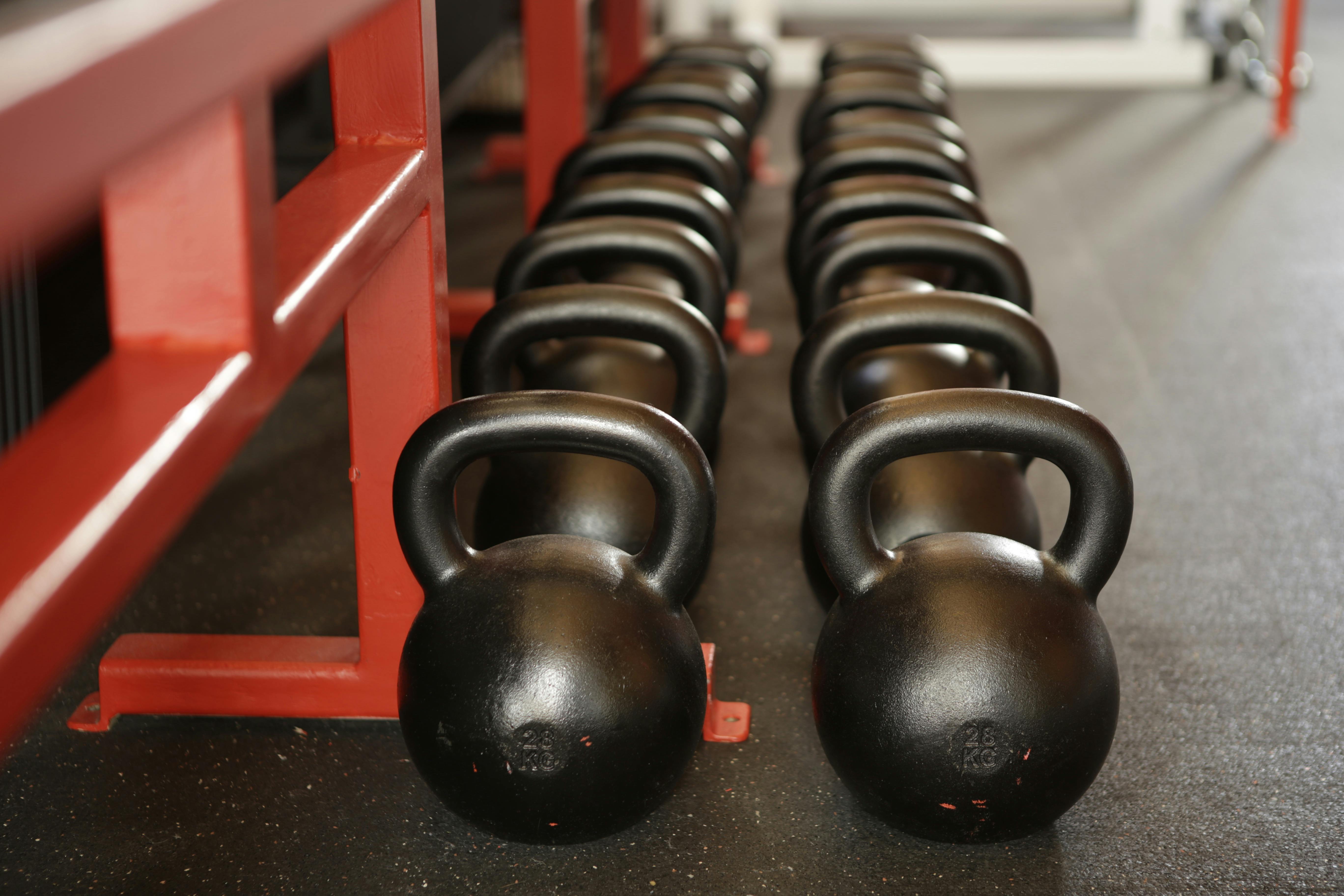
1. Yoga Mats
Yoga mats provide a comfortable and supportive surface for practicing yoga, Pilates, and stretching exercises. They help prevent slipping and provide cushioning for joints during floor exercises. Brands like Manduka, Gaiam, and Liforme offer yoga mats in different thicknesses, materials, and designs to suit individual preferences and needs.
2. Resistance Bands
Resistance bands are portable and versatile tools used for strength training, rehabilitation, and mobility exercises. They come in various resistance levels, allowing users to customize their workouts and target different muscle groups. Bands like Theraband, WODFitters, and SPRI offer durable resistance bands made from high-quality materials for long-lasting use.
3. Foam Rollers
Foam rollers are used for self-myofascial release, helping to alleviate muscle tightness, improve flexibility, and reduce soreness. They come in different densities and textures to provide varying levels of pressure and massage intensity. Brands like TriggerPoint, RumbleRoller, and LuxFit offer foam rollers in different sizes and designs to target specific muscle groups and body areas.
4. Fitness Trackers
Fitness trackers are wearable devices that monitor various metrics such as heart rate, steps taken, calories burned, and sleep quality. They provide valuable insights into daily activity levels and help users track their progress towards fitness goals. Brands like Fitbit, Garmin, and Apple produce a range of fitness trackers with features like GPS tracking, heart rate monitoring, and smartphone integration.
How to Set Up Your Fitness Equipment Business Successfully
Launching a fitness equipment business requires careful planning and strategic decision-making to ensure long-term success. From crafting a comprehensive business plan to establishing a robust online presence, each step plays a critical role in shaping the trajectory of your venture. In this part, we will explore the key components involved in setting up a fitness equipment business, starting with business plan development, selecting reliable suppliers, and determining the optimal location and online presence strategy. By laying a solid foundation and leveraging industry best practices, you can position your business for growth and profitability in the competitive fitness equipment market.
1. Business Plan Development
Creating a robust business plan serves as the foundation for any successful venture in the fitness equipment industry. It involves meticulous research, strategic planning, and a clear vision for the future. To develop a comprehensive business plan, businesses should:
- Conduct Thorough Market Research: Gain insights into market trends, consumer preferences, and competitive landscape. Understanding the market dynamics is essential for identifying opportunities and mitigating risks.
- Identify Target Audience: Define the target demographic for fitness equipment products based on factors such as age, gender, fitness goals, and purchasing behavior. Tailoring marketing efforts to specific audience segments increases the likelihood of success.
- Outline Financial Projections: Develop detailed financial projections, including revenue forecasts, expenses, and break-even analysis. Financial planning helps businesses allocate resources efficiently and gauge the feasibility of their business model.
A well-crafted business plan serves as a roadmap, guiding businesses through the complexities of the fitness equipment market and positioning them for long-term success.
2. Choosing Suppliers
Selecting reliable suppliers is paramount for businesses seeking to offer high-quality fitness equipment to their customers. By partnering with reputable suppliers, businesses can ensure product quality, timely delivery, and customer satisfaction. When choosing suppliers, businesses should:
- Assess Supplier Reputation: Evaluate suppliers based on their track record, industry reputation, and customer reviews. Suppliers with a history of delivering quality products and excellent service are more likely to meet expectations.
- Consider Pricing and Terms: Compare pricing structures and payment terms offered by different suppliers to ensure competitiveness and profitability. Negotiating favorable terms can lead to cost savings and improved margins.
- Establish Strong Relationships: Cultivate strong relationships with suppliers based on trust, communication, and mutual respect. A collaborative partnership fosters transparency and reliability, leading to a more efficient supply chain.
By carefully selecting suppliers, businesses can uphold standards of quality and reliability, earning the trust and loyalty of their customers.
3. Location and Online Presence
Deciding between a physical retail space and an online store is a crucial decision that impacts the reach and accessibility of fitness equipment products. While physical stores offer tangible experiences and personalized interactions, online stores provide convenience and global reach. To leverage both channels effectively, businesses should:
- Evaluate Market Dynamics: Assess market demand, local competition, and consumer preferences to determine the optimal location for a physical retail space. Consider factors such as foot traffic, accessibility, and demographics.
- Optimize Online Presence: Invest in building a strong digital presence through e-commerce platforms, social media channels, and a user-friendly website. Implement search engine optimization (SEO) strategies to improve visibility and attract online traffic.
- Integrate Omnichannel Strategies: Combine the strengths of physical and online channels to create a seamless shopping experience for customers. Offer options for in-store pickup, online ordering, and virtual consultations to cater to diverse preferences.
By strategically balancing physical and online presence, businesses can reach a wider audience, enhance brand visibility, and capitalize on opportunities in the competitive fitness equipment market.
Effective Marketing Strategies for Selling Gym Equipment
In the competitive landscape of the fitness industry, effective marketing strategies play a crucial role in promoting fitness equipment, reaching target audiences, and driving sales. From traditional advertising methods to digital marketing techniques, there's a wide array of strategies available to businesses looking to showcase their products and connect with consumers. In this part, we'll explore various marketing strategies tailored specifically for fitness equipment, providing insights into how businesses can leverage these strategies to maximize brand visibility, attract customers, and achieve success in the competitive fitness market.
Digital Marketing
Digital marketing is a powerful tool for reaching a broad audience and driving sales for gym equipment. Leveraging digital marketing strategies can significantly enhance your brand visibility and customer engagement.
1. Search Engine Optimization (SEO)
SEO involves optimizing your website and content to rank higher in search engine results. By targeting relevant keywords such as "buy gym equipment," "best exercise bikes," and "home gym setups," you can attract organic traffic to your site. Regularly update your website with fresh content, optimize product descriptions, and ensure your site is mobile-friendly to improve your SEO ranking.
2. Social Media Marketing
Social media platforms like Facebook, Instagram, and Twitter offer excellent opportunities to engage with potential customers. Create engaging content, such as workout tips, equipment usage guides, and customer success stories. Use features like Instagram Stories and Facebook Live to showcase product demonstrations and behind-the-scenes looks at your business. Paid advertising on these platforms can also target specific demographics, increasing the likelihood of reaching potential buyers.
3. Email Campaigns
Email marketing remains a highly effective strategy for nurturing leads and converting them into customers. Develop a comprehensive email campaign that includes newsletters, promotional offers, and personalized product recommendations. Segment your email list based on customer preferences and purchase history to deliver relevant content that resonates with your audience.
Content Marketing
Content marketing is essential for building brand authority and fostering trust with your audience. By providing valuable and informative content, you can position your brand as an expert in the fitness industry.
1. Blog Posts
Create blog posts that address common fitness questions, provide workout routines, and highlight the benefits of different gym equipment. Topics like "Top 10 Benefits of Using Exercise Bikes" or "How to Set Up a Home Gym on a Budget" can attract readers and encourage them to explore your products.
2. Instructional Videos
Video content is highly engaging and can effectively demonstrate how to use your gym equipment. Produce high-quality instructional videos that cover setup, maintenance, and workout techniques. Share these videos on your website, YouTube channel, and social media platforms.
3. Customer Testimonials
Showcase customer testimonials and success stories to build credibility. Encourage satisfied customers to share their experiences through reviews and video testimonials. Highlight these testimonials on your website and in marketing materials to create a sense of trust and reliability.
Traditional Marketing
While digital marketing is crucial, traditional marketing methods still play an important role in reaching specific audiences and enhancing brand visibility.
1. Print Advertising
Advertise in fitness magazines, local newspapers, and industry publications. Print ads can effectively reach readers who are passionate about fitness and may not be as active online.
2. Trade Shows
Participate in fitness expos and trade shows to showcase your products and connect with potential customers. These events provide an opportunity for face-to-face interactions, product demonstrations, and networking with industry professionals.
3. Local Partnerships
Collaborate with local gyms, fitness centers, and wellness studios. Offer to supply them with equipment in exchange for promoting your brand to their members. Host joint events or workshops to increase your visibility within the local fitness community.
Top Sales Techniques and Customer Service Tips for Fitness Equipment
In the highly competitive market of fitness equipment, mastering effective sales techniques and providing exceptional customer service are essential for success. From personalized consultations to post-sale support, every interaction with customers presents an opportunity to build trust, address needs, and ultimately drive sales. By understanding the nuances of the industry and prioritizing customer satisfaction, businesses can differentiate themselves, foster loyalty, and establish a strong foothold in the market. Let's explore the key strategies and best practices for optimizing sales techniques and delivering top-notch customer service in the realm of fitness equipment.
Sales Techniques
Implementing effective sales techniques is crucial for converting leads into loyal customers. Personalization and product knowledge are key components of a successful sales strategy. For instance, the fitness bike's sleek design and advanced features make it a popular choice among health enthusiasts looking to elevate their home workout routines.
1. Personalized Consultations
Offer personalized consultations to understand your customers' fitness goals and recommend the most suitable products. This personalized approach can build trust and demonstrate your commitment to helping customers achieve their fitness objectives.
2. Product Demonstrations
Conduct live or virtual product demonstrations to showcase the features and benefits of your gym equipment. Demonstrations allow customers to see the equipment in action and understand how it can enhance their workout routines.
3. Promotional Offers
Attract customers with special promotions, discounts, and bundle deals. Limited-time offers and seasonal sales can create a sense of urgency and encourage quick purchases.
Customer Service Excellence
Exceptional customer service is essential for retaining customers and generating positive word-of-mouth referrals.
1. Pre-Purchase Advice
Provide comprehensive pre-purchase advice to help customers make informed decisions. Offer detailed product information, comparison guides, and expert recommendations.
2. Setup Assistance
Assist customers with the setup and installation of their gym equipment. Offer detailed instructions, video tutorials, and, if feasible, in-person or virtual setup support.
3. Post-Sale Support
Ensure customers are satisfied with their purchases by offering ongoing post-sale support. Provide maintenance tips, troubleshooting assistance, and easy access to customer service representatives. Follow up with customers to gather feedback and address any concerns.
Leveraging Technology and Innovation in Fitness Equipment Sales
In the ever-evolving landscape of the fitness industry, staying abreast of technological advancements and embracing innovation is paramount for businesses to maintain a competitive edge. Leveraging technology not only enhances operational efficiency but also improves customer experience and drives business growth. Two key areas where technology plays a pivotal role in the fitness equipment market are e-commerce platforms and technological innovations in product design and functionality. By harnessing the power of these advancements, gym equipment sellers can expand their reach, streamline operations, and offer cutting-edge products that cater to the evolving needs of consumers.
E-commerce Platforms
Choosing the right e-commerce platform is critical for successfully selling gym equipment online. The platform should offer user-friendly interfaces, robust features, and extensive reach.
1. Shopify
Shopify is a popular e-commerce platform known for its ease of use and comprehensive features. It offers customizable templates, secure payment gateways, and a wide range of apps to enhance your online store's functionality.
2. WooCommerce
WooCommerce is a flexible and powerful e-commerce solution for WordPress users. It provides extensive customization options, seamless integration with WordPress, and a variety of plugins to optimize your store.
3. Amazon
Selling on Amazon can significantly increase your reach and credibility. Amazon's vast customer base and trusted platform make it an excellent choice for expanding your sales channels. Utilize Amazon's fulfillment services to streamline shipping and logistics.
Technology Innovations
Staying updated with the latest technological innovations in gym equipment can give your business a competitive edge.
1. Smart Fitness Devices
Smart fitness devices, such as connected treadmills and exercise bikes with interactive screens, are gaining popularity. These devices offer personalized workouts, real-time performance tracking, and immersive fitness experiences.
2. Virtual Training Systems
Virtual training systems, such as Peloton and Mirror, provide live and on-demand fitness classes. Incorporating similar technologies into your product lineup can attract tech-savvy customers who prefer guided workouts.
3. Sustainable Equipment
Eco-friendly and sustainable gym equipment is becoming increasingly important to consumers. Offer products made from recycled materials and highlight their environmental benefits in your marketing efforts.
By leveraging digital and traditional marketing strategies, implementing effective sales techniques, providing exceptional customer service, and staying ahead with technological innovations, you can successfully sell gym equipment and thrive in the competitive fitness industry.
Common Challenges and Solutions in the Fitness Equipment Market
The fitness equipment market is dynamic and competitive, presenting various challenges for businesses. Recognizing and addressing these challenges is crucial for success in this evolving industry. By understanding the hurdles and implementing effective strategies, businesses can not only survive but thrive.
Common Challenges
One of the primary challenges in selling gym equipment is the high level of competition. With numerous brands and retailers vying for market share, standing out becomes increasingly difficult. Additionally, supply chain disruptions, often caused by global events, can lead to delays and increased costs, impacting the ability to meet customer demand.
Changing consumer preferences also pose a significant challenge. As fitness trends evolve, so do customer expectations. Businesses must stay attuned to these shifts to ensure they offer relevant products. For example, the recent surge in home fitness has increased demand for compact, multifunctional equipment, whereas traditional gym equipment might not be as sought after.
As a leading gym manufacturer in China, BESTGYM continuously innovate their products to align with evolving fitness trends and consumer preferences, ensuring clients stay ahead of the curve in this dynamic industry.
Practical Solutions
To navigate these challenges, businesses should consider several practical solutions. Diversifying the product range is essential to cater to a broader audience and reduce reliance on a single product category. Offering a mix of traditional gym equipment, home fitness solutions, and innovative tech-driven products can attract diverse customer segments.
Maintaining strong supplier relationships is critical to managing supply chain disruptions. Building a network of reliable suppliers and having contingency plans can help mitigate the impact of delays and shortages. Additionally, investing in local manufacturing can reduce dependency on global supply chains.
Staying adaptable to market trends is crucial for long-term success. This involves continuous market research, customer feedback collection, and trend analysis. Businesses should be ready to pivot their strategies and offerings based on the latest fitness trends and consumer behaviors. Innovation should be at the forefront, with a focus on integrating new technologies and sustainable practices to meet evolving demands.
Future Trends Shaping the Fitness Equipment Industry
The fitness industry is poised for significant transformation driven by technological advancements and changing consumer lifestyles. Staying ahead of these trends can provide businesses with a competitive edge and open new avenues for growth.
Emerging Trends
Emerging trends such as virtual fitness classes and personalized training apps are revolutionizing the way people engage with fitness. Virtual fitness platforms like Peloton and Mirror offer interactive, at-home workout experiences that cater to the growing demand for convenience and personalized training. These platforms provide live and on-demand classes, creating a community-like atmosphere that motivates users to stay consistent with their workouts.
Personalized training apps are also gaining popularity, leveraging artificial intelligence and machine learning to offer customized workout plans and nutrition advice. These apps track user progress, adapt to their fitness levels, and provide real-time feedback, enhancing the overall fitness experience.
Sustainable equipment is another trend shaping the future of the fitness industry. As consumers become more environmentally conscious, there is a growing demand for eco-friendly fitness products. Equipment made from recycled materials and brands with sustainable practices are gaining traction. Highlighting the environmental benefits of these products can attract a new segment of eco-conscious consumers.
Future Outlook
The future of the fitness industry looks promising, with continued growth and innovation on the horizon. The integration of technology into fitness equipment and the rise of digital fitness platforms will continue to drive market expansion. Businesses that embrace these innovations and adapt to changing consumer preferences will thrive in this dynamic market.
To capitalize on these opportunities, gym equipment sellers should invest in research and development to stay ahead of technological advancements. Partnering with tech companies to create smart fitness solutions can set businesses apart from competitors. Additionally, focusing on sustainability and eco-friendly products will cater to the growing demand for responsible consumption.
By staying informed, adaptable, and innovative, businesses can navigate the challenges and leverage the trends to achieve long-term success in the fitness industry.
Read more: Health and Fitness Market Growth: Opportunities and Challenges in 2024
Conclusion: Mastering the Fitness Equipment Market
In summary, the fitness industry offers a diverse array of products and services tailored to meet the diverse needs and preferences of consumers. From cardio machines and strength training equipment to accessories and technology-driven innovations, businesses have a plethora of options to choose from when catering to the fitness market. However, success in this industry requires more than just offering quality products—it demands strategic planning, effective marketing, and a commitment to customer satisfaction.
By developing a robust business plan, businesses can lay the groundwork for long-term success by identifying target audiences, conducting market research, and outlining financial projections. Choosing reliable suppliers ensures that businesses can offer high-quality products and maintain a steady supply chain, fostering trust and loyalty among customers. Moreover, deciding on the right location and establishing a strong online presence are critical for maximizing reach and visibility in a competitive market landscape.
Marketing strategies play a pivotal role in promoting fitness equipment, attracting customers, and driving sales. Whether through traditional advertising methods or digital marketing techniques, businesses must leverage a combination of strategies to effectively engage with their target audience and differentiate themselves from competitors. By embracing innovation, staying adaptable to market trends, and prioritizing customer satisfaction, businesses can navigate the complexities of the fitness industry and position themselves for success in a dynamic and ever-evolving market.


